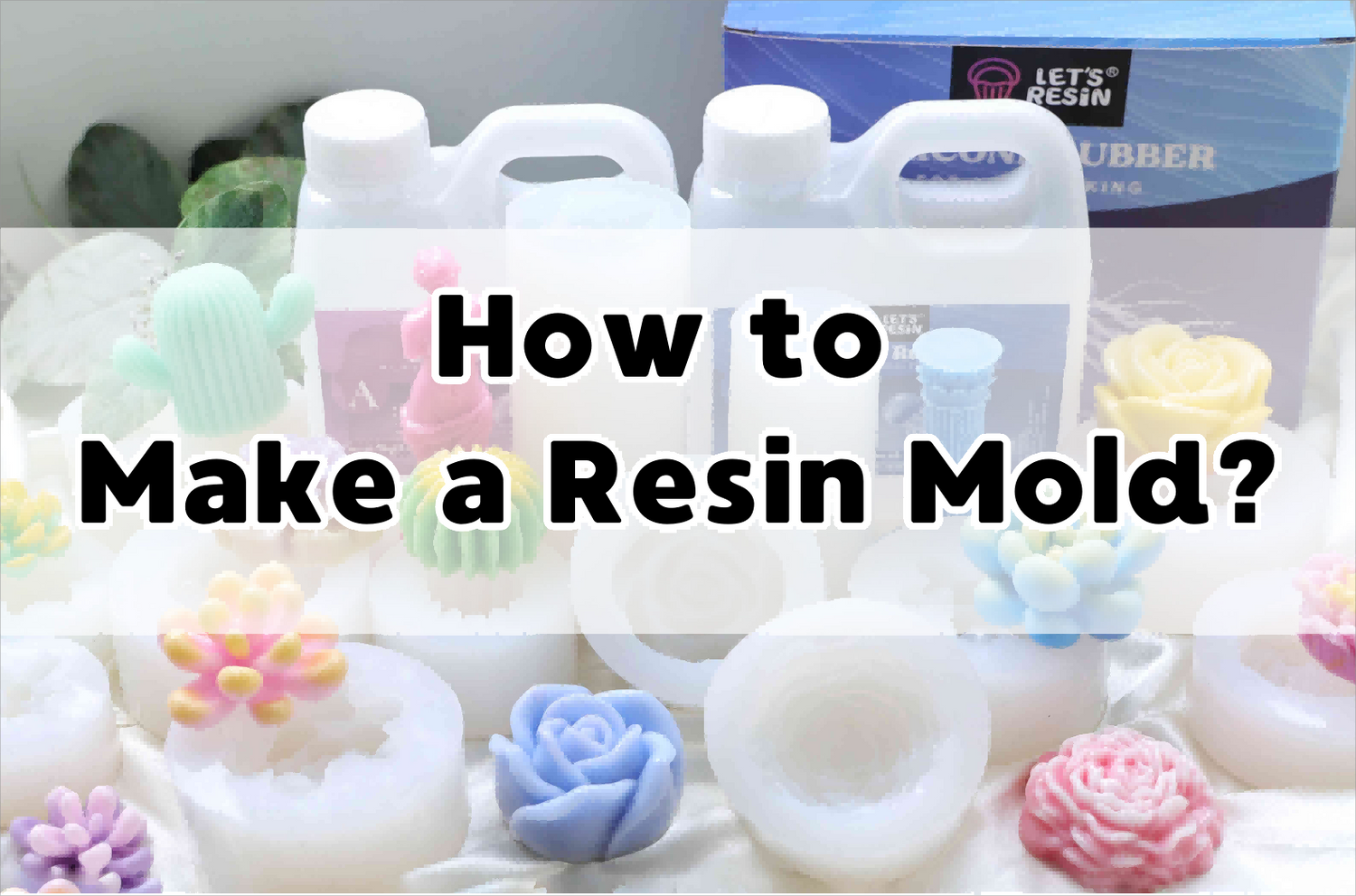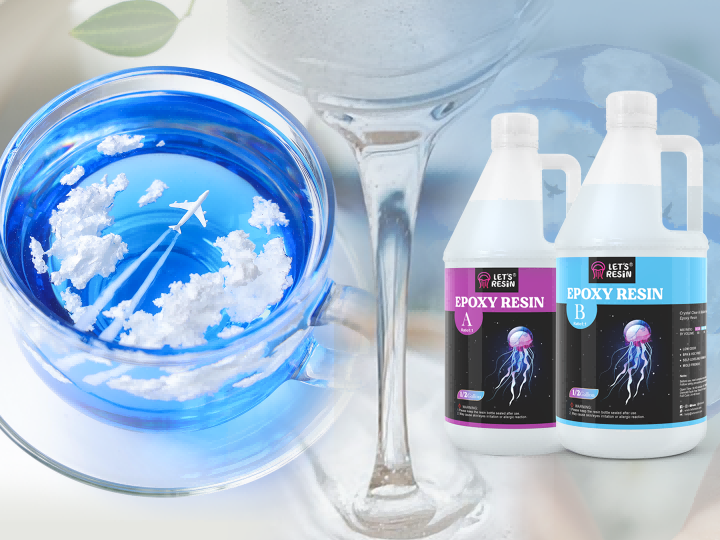Content Preview:
I. Tips That You Need To Know Before Process
II. How to Make a Resin Mold?
III. How to Use Silicone Putty to Make Resin Molds?
IV.FAQ
Easiest steps ever to help everyone get started to making their silicone resin molds at home and enjoy the advantage of getting their unequaled unique molds shape, with only the high quality yet affordable silicone rubber from Let's Resin, the best silicone mold making kit to check out this week!!!!
I. Tips That You Need To Know Before Process
Tips to Reduce and Avoid Bubbles
1.Put the silicone into the vacuum machine for bubble discharge,and wait for the vacuum machine air pressure gauge pointer to point to-0.1MPA, which is the best method.
2.If you do not have vacuum equipment, when stirring,you car1 try to stir gently in a uniform direction,so that the generation of bubbles will be much less,waiting for the bubbles to escape naturally.
3. After you mix the silicone,seal it and store it in the refrigerator for 1 hour. Then let it continue cure at room temperature.
Note: Higher Temperatures will cause bubbles. Low temperature will slow down the curing speed and leave enough time for the bubbles to escape. Make sure to degas the bubbles first if you want to heat cure the liquid silicone.
!!!WARNING
-
- Do not swallow.
- Keep out of reach of children.
- Avoid contact with eyes.
- Do not dispose of waste into drains.
II. How to Make a Resin Mold?
List of Supplies
-
-
Master piece (to Mold) (This piece must be of non-silicone nature, if you use clay, make sure it is sulfur free. You can use plastic, china, ceramic, glass and and most metal items to mold.)
- Liquid Silicone
- Plastic Cup & Stick
-
Step 1 Prepare
Prepare a master piecea and a container (not silicone material). Our adjustable mold housing is recommended.
It is made of high-quality ABS plastic + PC plastic material.; it's much durable and lightweight compared to those mold housing which made of silicone material, not easily deformed or broken up, non-sticking and can be reused for many times.
They can be assembled to form 3 sizes of rectangle and 3 sizes of squares by different combinations; the maximum size of the square measures 5.9'' x 5.9''; and the maximum size of the rectangle is 7.84''x 3.94''. The height is up to 2inch. You can make any silicone molds with a height under 2inch according to your needs, such as 1inch, 1.5inch, 2inch. Using a heat glue gun can help bond the 2 kits together and use more binder clips to strengthen the frame to avoid the silicone leaking.
Then set your master mold into the container and keep the items face up. The mother film can be fixed in the container with hot glue to prevent the master mold from floating after the silicone is injected.
Below are some of the materials you can use as the master mold:
1) epoxy resin cured pieces
2) plaster/ceramic/cement/glass/sulfur-free clay(like air dry clay, polymer day)
3) some of the 3D model(PLA and ABS material)
Below are some of the materials the liquid silicone should avoid contact with while curing:
1) UV resin, 3D printer resin, polyurethane resin, unsaturated polyester resin; uncured epoxy resin; polyester putty.
2) compounds containing heavy metal ion including Nitrogen(N),Phosphorus(P), Sulfur(S), Tin(SN), Lead(PB), Mercury(Hg),Arsenic(AS) or other heavy metal elements.
3) Sulfur-containing clay, like plasticine, hardening clay, industrial plasticine clay, carved oil sludge etc.
4) Sulfur-containing silicone rubber, synthetic rubber,latex gloves, nitrile, neoprene, Buna N, natural rubber and rubber bands.
Step 2 Mix Silicone
Pour Part A into the mixing cup.
Pour the equal amount of Part B into the mixing cup.
Stir them thoroughly for 3~5 minutes.
Step 3 Pour Silicone
Pour the well-mixed silicone into the container. Remember to cover the top of the master mold by at least 1/4 inch. The silicone mold may be ripped if you make it too thin. It takes 12 hours for complete curing at room temperature.
Step 4 Finish
Trim the details.
Pull the item out of the mold. And use a utility knife to trim the edge details of the mold.
Finished!
Step 5 Use the mold
Use the mold,fill with resin or clay.
III. How to Use Silicone Putty to Make Resin Molds?
List of Supplies
-
- Master piece (to Mold)
- Silicone Putty
- Plastic Cup & Stick
-
Step 1
Measure the equal amounts of Part A (Blue) and Part B (White) by weight.
Step 2
Mix and knead the putty together until a uniform blue color is achieved.
Step 3
Press a thin layer into the details of original. Apply a thicker layer to finish the mold.
Step 4
Let it fully cure for 15~20 minutes.
Step 5
Remove the fully cured mold from the original.
Step 6
Finished mold,ready to cast any piece you like.
IV. FAQ
Q1 : How to estimate how much silicone is needed?
Q2 : How to identify the reasons behind silicone not curing properly?
A : There are primarily three scenarios to consider:
1. If the cured silicone mold appears fine externally but feels sticky and uncured where it contacts the master mold,it indicates an incompatibility with the master mold material.Using a master mold material that is compatible with silicone is advisable.
2.In cases of partial curing,where certain areas remain uncured, uneven stirring may hinder the complete reaction of the platinum curing agent. Thorough stirring is recommended to ensure proper mixing of Part A and Part B.
3.If the silicone surface is sticky while the interior has solidified, several factors may be at play:
a. Improper operation such as insufficient stirring could lead to this issue. Stirring for a minimum of 3-5 minutes (adjusting based on the silicone amount) is advised.
b.Long curing time and significant air exposure can cause the platinum curing agent on the surface to react with moisture from the air,resulting in surface stickiness.It is recommended to apply heat to expedite curing or place the mold in a sealed
environment. (Please make sure to work in a dry setting.)
Q3 : How to demold easily?
A : Please clean the surface of the master mold to make its mooth before use. And you can spray the mold release agent or apply Vaseline to the master mold.Please make sure the silicone is fully cured before demolding.
Q4 : How to clean the un-cured liquid silicone?
A : First, wipe it with a dry cloth,then put some come corn starch or talcum powder on it and rub,and then wash it with detergent water.
*In case you're not sure if the questionable materials are compatible, we suggest you always cure a small amount of silicone in contact with the materials before you go with a larger quantity.







